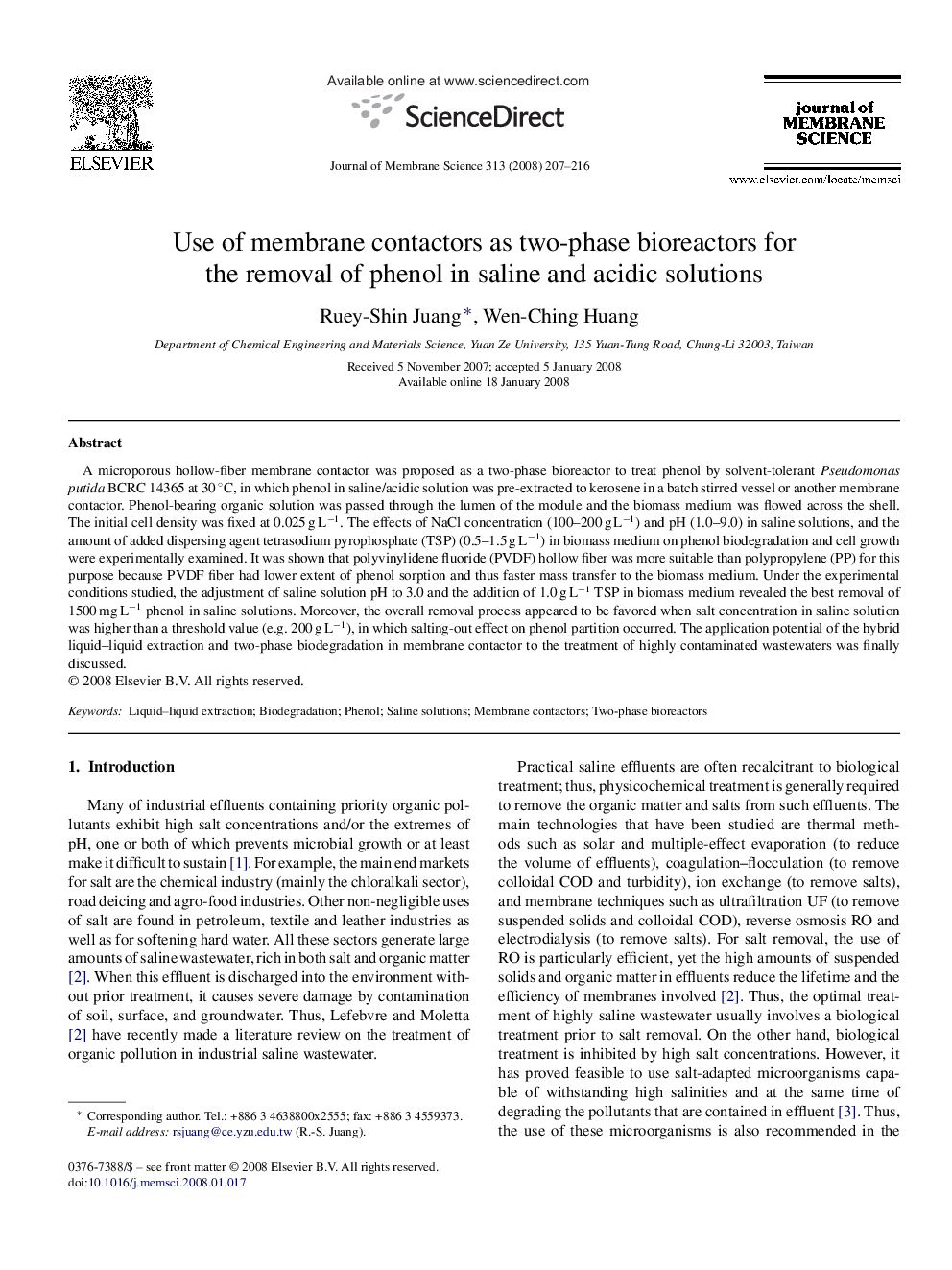| Article ID | Journal | Published Year | Pages | File Type |
|---|---|---|---|---|
| 638023 | Journal of Membrane Science | 2008 | 10 Pages |
A microporous hollow-fiber membrane contactor was proposed as a two-phase bioreactor to treat phenol by solvent-tolerant Pseudomonas putida BCRC 14365 at 30 °C, in which phenol in saline/acidic solution was pre-extracted to kerosene in a batch stirred vessel or another membrane contactor. Phenol-bearing organic solution was passed through the lumen of the module and the biomass medium was flowed across the shell. The initial cell density was fixed at 0.025 g L−1. The effects of NaCl concentration (100–200 g L−1) and pH (1.0–9.0) in saline solutions, and the amount of added dispersing agent tetrasodium pyrophosphate (TSP) (0.5–1.5 g L−1) in biomass medium on phenol biodegradation and cell growth were experimentally examined. It was shown that polyvinylidene fluoride (PVDF) hollow fiber was more suitable than polypropylene (PP) for this purpose because PVDF fiber had lower extent of phenol sorption and thus faster mass transfer to the biomass medium. Under the experimental conditions studied, the adjustment of saline solution pH to 3.0 and the addition of 1.0 g L−1 TSP in biomass medium revealed the best removal of 1500 mg L−1 phenol in saline solutions. Moreover, the overall removal process appeared to be favored when salt concentration in saline solution was higher than a threshold value (e.g. 200 g L−1), in which salting-out effect on phenol partition occurred. The application potential of the hybrid liquid–liquid extraction and two-phase biodegradation in membrane contactor to the treatment of highly contaminated wastewaters was finally discussed.
